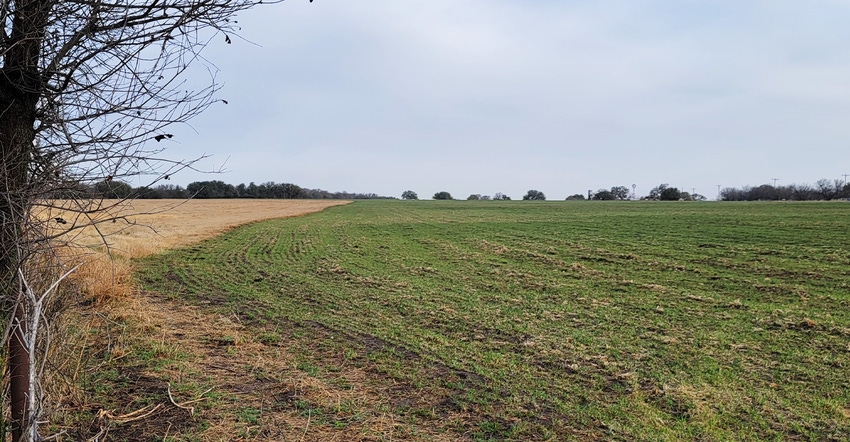
Ben Scholz, Collin County, Texas, says his 2022 wheat crop may represent the small percentage of the state’s crop ranked better than fair.
Latest National Agricultural Statistics Service (NASS) report shows Texas with only 7% of the 2022 wheat crop rated good, none rated excellent, and only 12% fair, leaving 81% in poor (23%) to very poor (58%) ratings.
“That 7% is where we are,��” Scholz says. “Our crop looks very good. Statewide, that’s not the case.”
He adds that some areas in his Northeast Texas region have not fared as well. “we’ve had some rain in this area,” he says. “Some areas nearby have had less.”
He adds that the latest drought monitors indicate Northeast Texas, along with much of the state, is in drought status. “We have had some rain in the area,” Scholz said.
See, Wheat growers: don’t pass on profit potential
The NASS report indicates drought persists across much of the state. “Parts of the state received from trace amounts to upwards of 2 inches of precipitation,” NASS reports. “Isolated areas in Northeast Texas received up to 5 inches.”
Elsewhere across the state, drought ranges from none to exceptionally dry. The Northern and Southern Plains are the driest, according to NASS. The report says recent rains also helped wheat in the Texas Blacklands, in central Texas. “In some areas, producers have switched to irrigation or failed fields.”

Scholz, a past president of the National Wheat Growers Association and a current board member, says Kansas and other Midwest wheat producers are in slightly better shape. Kansas has about 25% of the wheat crop rated good to excellent. “They are in better shape than Oklahoma and Texas,” Scholz says. “Texas is by far the worst. We have a very small percentage in the good to excellent range.”
See, WHEAT SCOOPS: India, Australian wheat may offset Black Sea exports
The drought persists at a bad time for Southwest growers who could, with an average or better crop, help fill a grain shortage resulting from the Russian invasion of Ukraine. The wheat market, up significantly even before Russia’s aggression, has topped $10e a bushel in recent weeks.
“I have seen the market go that high before,” Scholz says. “That was more than a decade ago, back in the ‘70s, when it hit $13 or $14 a bushel. That’s when we got interested in producing wheat in Northeast Texas.”
With 75% of the state’s wheat crop rated poor to very poor, Texas producers will have limited opportunities.
“Zero times whatever the market offers still comes out to zero,” Scholz says. “Much of the acreage had no time to vernalize.”
For farmers who have wheat to take to harvest, Scholz says enhanced management could help maintain or improve production potential.
See, COTTON SPIN: A changing picture
“If farmers can get fertilizer, especially on hard wheat, applying nitrogen now or as late as possible before heading, they can enhance yield and protein levels.”
For some, fertilizer may be hard to get, Scholz says. “So far, we have been able to get needed supplies in our area, but it’s not same all over the Southwest. I hear a lot more stories of input shortages, including herbicides, in other areas.” Higher costs and potential shortages are more likely, he adds, as farmers go into spring planting season.
He’s watching markets carefully. “I have all the 2021 crop sold and have been pricing a little wheat and corn as we go along. Marketing is always a challenge. We always want to hit the top, but we miss more than we hit.”
Scholz says consumers will feel the pain of grain shortage as well. “But wheat accounts for only a small percentage of the price of a loaf of bread.”
About the Author(s)
You May Also Like






